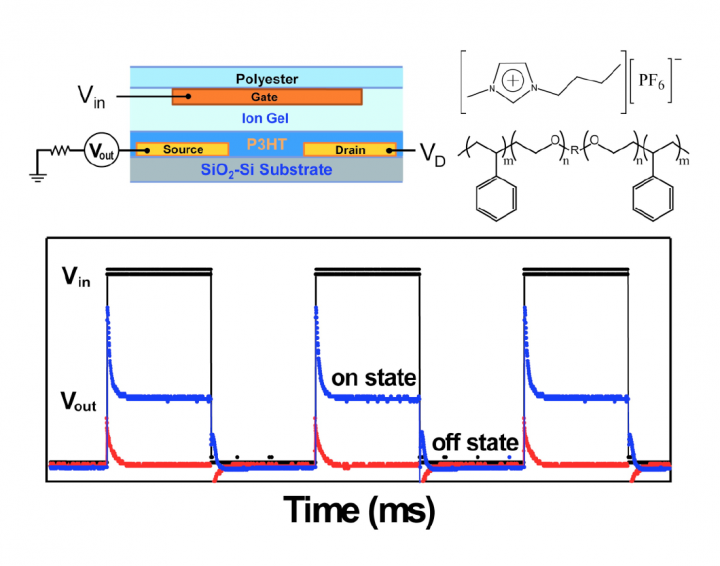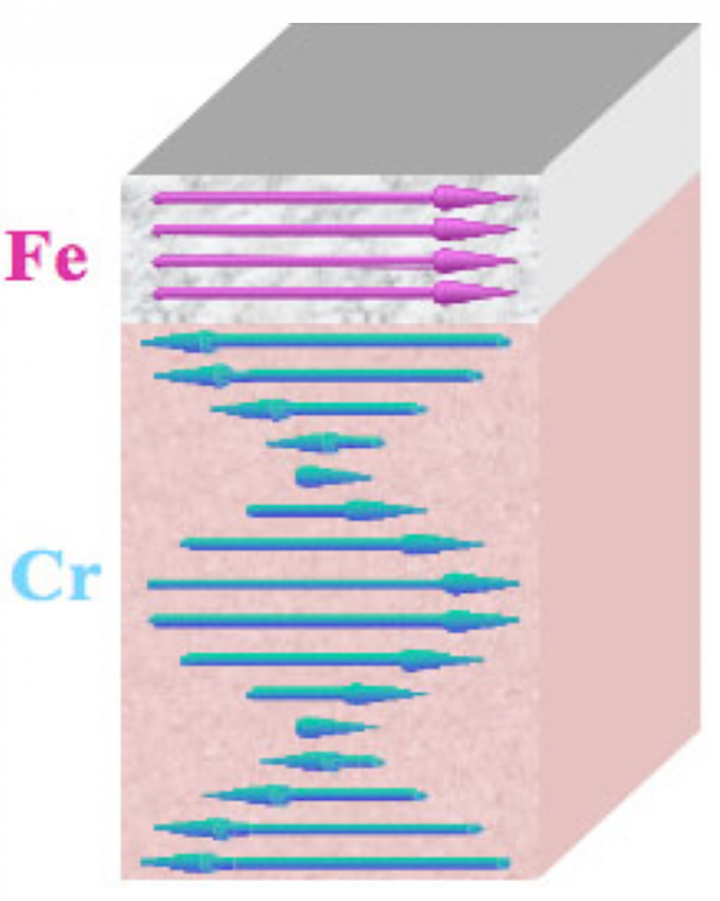A major goal of organic electronics is the development of new kinds of solution processable organic dielectric materials that can serve as gate insulators in organic thin film transistors (OTFTs).

A major goal of organic electronics is the development of new kinds of solution processable organic dielectric materials that can serve as gate insulators in organic thin film transistors (OTFTs).
For hardness and stiffness, it's long been thought that nothing beats diamond. But Roderic Lakes and Don Stone, from the University of Wisconsin MRSEC and their colleagues have made a material that is almost ten times stiffer, by embedding small particles of barium titanate in a matrix of tin.
The increased speed and power of microelectronic devices has come from a steady reduction in the size of their constituent features, which has been achieved by using progressively shorter wavelengths for the photolithography used in their fabrication.
The MIT MRSEC, in collaboration with the Materials Processing Center (MPC) and the Department of Materials Science and Engineering (DMSE), has launched a new MIT-wide materials website...The MIT MRSEC, in collaboration with the Materials Processing Center (MPC) and the Department of Materials Science and Engineering (DMSE), has launched a new MIT-wide materials website designed to help interest
Human embryonic stem cells (hESCs) hold vast promise in science and medicine because of their potential to replicate indefinitely and their capability to differentiate to any cell type found in the adult. Many environmental cues, including soluble factors and intercellular signals, affect hESC differentiation and self-renewal decisions.
Members of IRG-III of the MIT MRSEC have demonstrated a light emitting device application of such quantum dots. They show that white light can be generated in a layered device that combines organic semiconductor layers with a single monolayer of quantum dots.
In the Namib Desert in Namibia, Africa, a tiny beetle is able to convert microscopic droplets of water present in a morning fog into larger sized droplets that are directed into the beetle's mouth to quench a

Magnetism in metallic films and interfaces has been intensively studied since the discovery of Giant MagnetoResistance (GMR) in the late 1980s. This effect enabled fabrication of high sensitivity magnetic field sensors for the read heads in magnetic hard disks, revolutionizing magnetic recording.